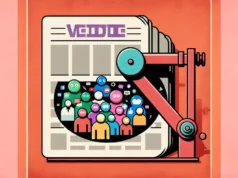When the digital revolution knocked on the doors of the media industry, it marked the beginning of an era where information could travel at the speed of light, but also where revenue-dependent print newspapers and magazines found themselves holding on by the skin of their teeth. Despite the setbacks encountered, the industry has been unfailing in its commitment to provide accurate, reliable, and unbiased news. And now, it appears, the season of survival mode may be ending as media outlets are increasingly turning to subscription models as a sustainable way to fund quality journalism going forward.
The recent years have seen a rapid shift from ad-supported business models towards subscriptions. Giants like The New York Times and The Washington Post, as well as digital natives like The Information and Business Insider, have already set a successful precedent. Even tech bigwigs Google and Facebook, often considered the nemesis of the struggling media industry for their ad dominance, are also helping publishers secure subscribers.
The impetus for this shift lies in the quest to ensure the survival of quality journalism- the kind that involves in-depth reporting, extensive research, fact-check, and does not bow down to the whims of advertisers or the trending topics of the day. The kind that takes time, effort, and money. The kind that the world needs more of.
To stay afloat in the past, many media outlets resorted to cranking out high-volume, low-quality, clickbait content just so they could compete in the ad revenue game. It was essentially a bidding war – the more eyeballs the story could draw, the higher its ad revenue. The focus was not on substance or quality; it was on ‘catchiness’. This race for clicks began to undermine the integrity of journalism. But now, with a subscription-based model, priorities are shifting.
In a subscription model, users pay a fee in exchange for (usually unlimited) access to content. This revenue model is beneficial to publishers because it provides a steady stream of recurring revenue. And the benefits of recurring revenue are undeniable: it is more predictable than ad revenue, and it allows publishers to focus their resources on generating quality content, rather than on chasing clicks.
Furthermore, a subscriber base serves as a direct relationship between a news outlet and its most loyal readers. This can be a gold mine for publishers to harness and make strategic decisions, based on user behavior, consumption preferences, feedback, and more. It provides a magnitude of opportunities to drive customer engagement and loyalty. No wonder, then, that publishers of all sizes are pushing aggressively into subscriptions.
Interestingly, this change has been bolstered by the support from technology platforms, particularly Google. Google has increasingly been investing in tools and initiatives aimed at bolstering subscriptions for news publishers. One such initiative is ‘Subscribe with Google’, which makes it easier for people to subscribe to publishers and stay logged in across all devices. It also boosts subscriber visibility in Google Search results and News feeds.
Despite the many advantages, transitioning to a subscription model is not an easy task for publishers, and it doesn’t come without its drawbacks. As the content is locked behind a paywall, there is a risk of experiencing a short-term decrease in page views, traffic, and ad impressions. Attracting initial subscribers and retaining the existing ones can be a daunting task.
Yet, the enthusiasm for subscription models is palpable in the publishing world. “We’re done with the age of clickbait. We want to be in the relationship business,” declared a speaker at the American Society of News Editors’ 2019 meeting. And it is this new spirit of the media industry that, driven by the commitment to preserve the heritage of quality journalism, could well determine its future.
SOURCES:
1. “For Journalism’s Future, All Eyes Are on Big Tech.” Wired, February 2020.
2. “Google’s future is useful, creepy and everywhere.” Axios, May 2019.
3. “How Traditional Journalism Survival Lies In Its Subscription Model?” IEEE Xplore, March 2019.
4. “Majority of US papers using digital subscription model.” American Press Institute, November 2018.
5. “Publishers turn to subscriptions as consumers tire of clickbait.” VentureBeat, February 2018.
6. “‘Subscribe with Google’ attempts to simplify how web readers pay for news.” The Verge, March 2018.
7. “The impact of digital on growth strategies.” McKinsey & Company, May 2018.






